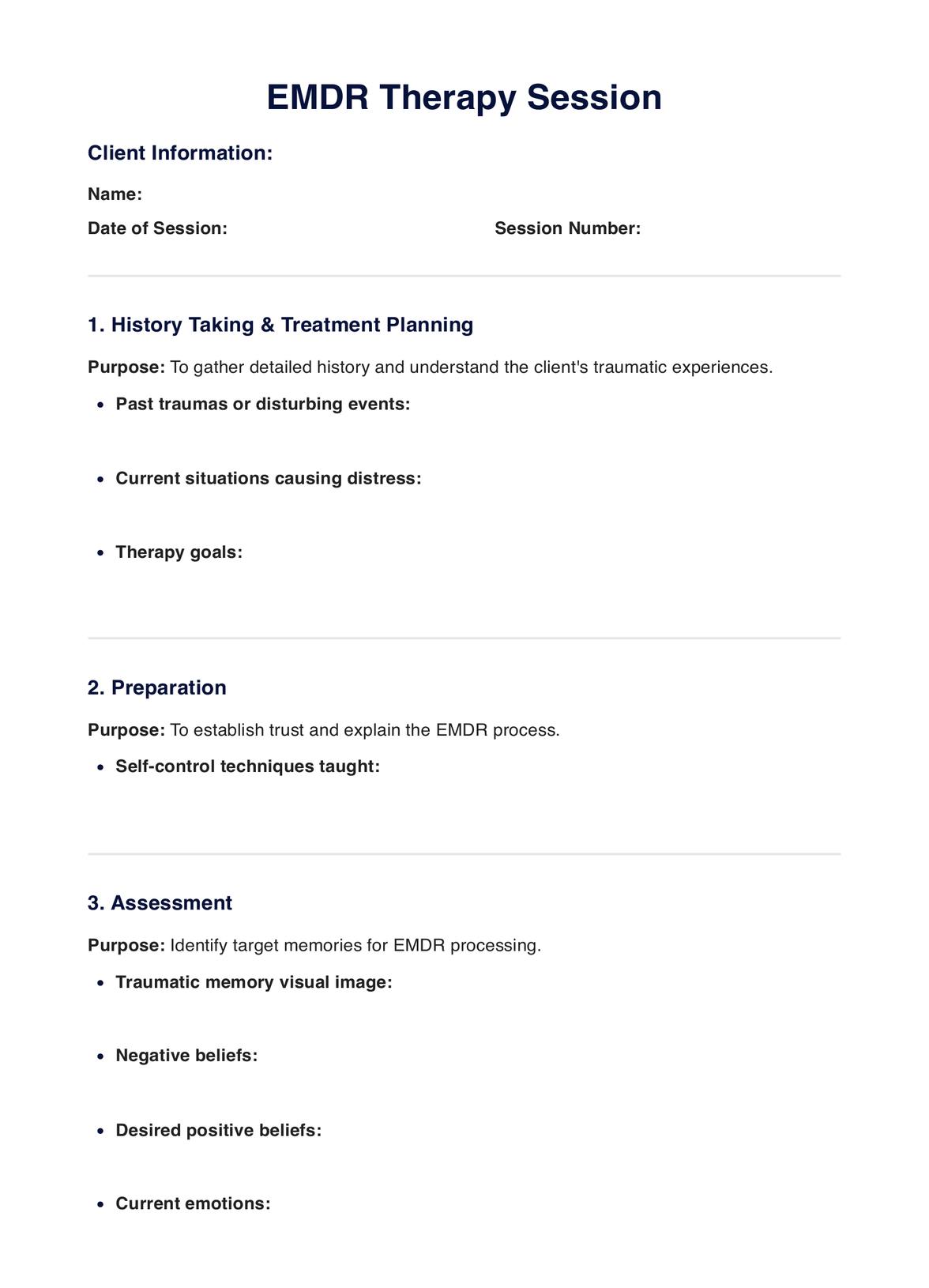Typically, trained EMDR therapists use the 8 Phases of EMDR in their practice.

8 Phases Of EMDR
Explore the 8 Phases of EMDR, a proven therapeutic approach for PTSD, anxiety, and more. Understand each phase's purpose in the treatment process.
Use Template
8 Phases Of EMDR Template
Commonly asked questions
They are used during EMDR therapy sessions to guide treatment and track progress.
Each phase represents a step in the EMDR process, from history taking to reevaluation. The therapist guides the patient through these steps to help them process traumatic memories and reduce their psychological impact.
EHR and practice management software
Get started for free
*No credit card required
Free
$0/usd
Unlimited clients
Telehealth
1GB of storage
Client portal text
Automated billing and online payments











